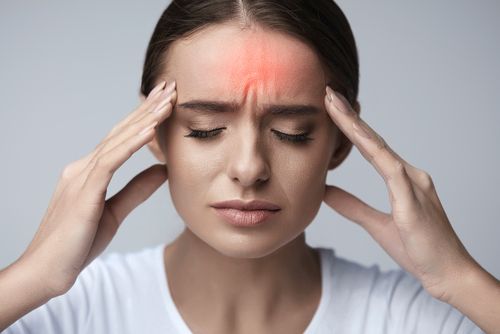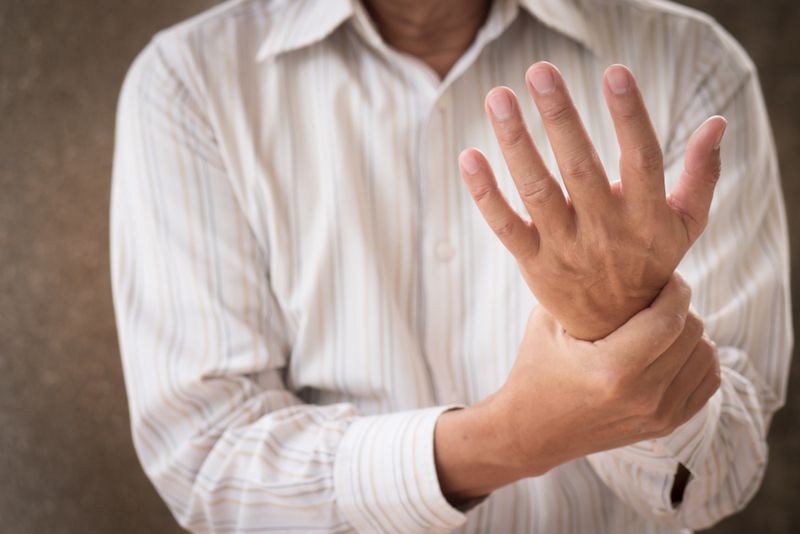
Here’s what you need to know about joint pain and how chiropractic care can help relieve discomfort.
Joint Pain: How Chiropractic Care Can Relieve Your Discomfort
Joints are important musculoskeletal structures that connect bones to one another. Some facilitate different types of movement while others remain fixed. Joint pain is a very common and often debilitating problem with around one-third of all adults experiencing it at some point during their lifetime. Fortunately, there are treatments that can help and one of the most effective is chiropractic care.
Causes of joint pain
There are many different things that can cause joint pain. The most common is a condition called osteoarthritis. Osteoarthritis occurs when the protective cartilage that usually protects the ends of bones begins to deteriorate, causing them to rub against one another. This friction causes pain, swelling, and problems moving the joint.
Other potential causes of joint pain include but are not limited to:
- Gout
- Bursitis
- Inflammation of the joint lining
- Damage to the cartilage at the back of the kneecap
- Bleeding into the joint space
- A fracture to the bones of the joint
- Other types of arthritis such as rheumatoid and psoriatic arthritis
Your chiropractor will be able to assess your condition to determine the cause of your joint pain and recommend chiropractic techniques to help ease your discomfort.
Symptoms and signs associated with joint pain
Joint pain is just one of the symptoms that you might experience due to the underlying cause of your discomfort. Some of the others can include:
- Joint stiffness
- Joint warmth
- Limping
- Loss of range of motion in the joint
- Weakness
Chiropractic care and joint pain
Chiropractic treatment is a popular alternative to conventional medicine when it comes to treating the many causes of joint pain. It can also be used alongside medications and other conventional treatments.
Chiropractic care focuses on eliminating misalignments in the spine and joints so that there is less pressure on the spinal cord and central nervous system. This allows all bodily systems to function optimally and boost circulation, enabling blood and nutrients to be delivered to the areas of the body that require healing. A reduction in inflammation helps to counteract spinal and joint motion problems, easing movement and reducing the pain that you might be experiencing, without the need for pain medications.
Chiropractors can also help address other factors that could be contributing to your joint pain, such as poor posture or sleep position, or not warming up or cooling down properly when exercising.
Chiropractic treatment plans are personalized and tailored to the needs of each individual. This means that the precise techniques used, frequency of appointments, and overall the care you are given will vary depending on the extent of your joint problem.

Neck pain is a relatively common ailment, which most of us will experience at least once in our lifetime. In most cases, neck pain will improve and disappear on its own, but if you frequently suffer from this problem, or find that conventional ways of relieving your pain are not working, you may want to consider chiropractic care.
About neck pain
The neck is a very important part of our body, containing the very top of the spine, called the cervical spine as well as many blood vessels and nerves that supply structures including our esophagus, larynx, trachea and thyroid gland. The neck is also home to major blood vessels including the carotid arteries and jugular veins.
When there is tension in the neck, it can have a significant impact on the flow of blood between the head and body, as well as cause compression of the nerves and potentially the spinal cord. When this happens, it can have an effect on other areas of the body, including the upper and lower limbs.
What causes neck pain?
In many instances, the exact cause of neck pain may never be known, but some of the most common causes believed to be behind the majority of cases include:
Sleeping in an awkward position
Bad posture
Trapped nerve
An injury, such as from a vehicle collision or fall
The pain you experience may also differ. It may be a constant dull ache or a sharp pain that occurs when you place your head a certain way or perform a specific movement, such as turning your head from side to side.
In many cases, neck pain may be accompanied by other symptoms, including swelling or inflammation in the neck, pain that radiates into the shoulders or upper arms, or headaches.

Lower back pain is an exceptionally common complaint and it is estimated that 80% of Americans will suffer from it at some point during their lifetime. Lower back pain is also a leading cause of absence from work due to ill health, even though more than half of all cases are believed to be a direct result of the patient doing a job that involves continual sitting.
In many cases, the back pain is either not severe enough for the patient to seek professional intervention or it resolves itself within a few days. However, there is a percentage of individuals who suffer from chronic, recurrent back pain and are reliant on pain medication to help keep them comfortable day today.
Fortunately, there is no longer any need to suffer from ongoing lower back pain. Chiropractic care from a trained and experienced professional can help relieve your discomfort and enable you to work, sleep and enjoy life without worrying about back pain.
What causes lower back pain?
The lower back, also known as the lumbar, works with the bones of the pelvis to help support the weight of our body as well as to stabilize, rotate, flex and bend the spinal column.
Lower back pain has been attributed to many different things, but experts tend to agree that a sedentary lifestyle, combined with the growing obesity problem, has definitely contributed to the increasing number of people experiencing lower back pain. Posture is also a significant cause of lower back pain. Sitting at laptops and computers for hours on end as well as sitting too long while driving and when watching television are all associated with this type of discomfort.
Occasionally, back pain can be attributed to a medical condition such as sciatica, irritation of the nerve that runs from the pelvis to the feet, or a slipped/herniated disc. Nevertheless, it is often impossible to pinpoint an exact cause of lower back pain and is therefore often referred to as ‘non-specific back pain’ by doctors.

A headache is a very generalized term given to pain that is felt in the head or sometimes the neck. There are many different types of pain associated with headaches ranging from acute localized discomfort to a more generalized ache. Some headaches may appear suddenly and only last for a short period of time while others may build gradually and last for several hours.
Types of headaches
While experts have identified more than 150 different types of headaches, some are more common than others. These include:
Tension headaches
By far the most common type of headache is a tension headache, which is usually attributed to stress. They tend to come and go and cause mild to moderate pain with no other symptoms.
Migraines
Migraines are often considered to be more painful than a tension headache. They last longer ranging anywhere from a few hours to a few days and are usually accompanied by other symptoms such as sensitivity to light, smells, or sound, nausea and vomiting, blurred vision, and loss of appetite. Some people suffer from recurrent migraines and may experience multiple episodes in a short period of time.
Cluster headaches
Cluster headaches tend to occur in groups and even though no one is sure why are more common in men than women. The pain associated with a cluster headache tends to be a burning or piercing sensation that is localized behind or around one eye. It can also be so severe that the patient can’t function properly until the pain eases.
Sinus headaches
Sinus headaches tend to occur when one has a cold or sinus infection. With a sinus headache, the pain is felt in your cheekbones, forehead, or bridge of your nose where the sinuses are located since it is caused by the swelling of your sinuses. The pain usually decreases after taking anti-inflammatory pain medication.
There is a range of things that you can do to help with one-off headaches, such as taking pain medications, drinking plenty of water, and trying to relax somewhere calm and quiet. However, if you suffer from recurrent headaches, you may want to consider seeking chiropractic care, which has been shown to be very successful in providing relief and even helping prevent this type of pain.

Intervertebral discs are found all throughout the spinal column except for the C1 and C2 vertebrae (the Axis and Atlas). These discs act to cushion the vertebrae from each other as well as the impacts that are felt throughout the spinal column. While many people will describe painful back issues as a “slipped disc,” this isn’t really the case as the intervertebral discs don’t actually slide out of place. What many people experience is called a bulge. This bulging disc is also called a herniated disc.
Causes of a Herniated Disc
Herniated discs may occur for a variety of reasons. A damaged disc may be the result of poor posture or due to the patient being overweight which places additional stress on the spinal column. Discs may also become herniated due to a sports or other traumatic injury.
Some patients have even suggested that a relatively minor activity, such as a sneeze, has caused a herniated disc. This is usually the end result of a long-term weakening of the disc that has been unnoticed until a small movement finally makes the injury apparent.
Signs of a Herniated Disc
The signs and symptoms of a herniated disc can vary widely. This is because damaged discs manifest in different ways at various points in the spinal column. For instance, discs that are damaged in the lower back may cause intense pain in the legs, lower back, or buttocks. But if the herniated disc is in the neck, pain is more likely to present in the shoulders or arms. The pain experienced from a herniated disc can also be felt as a sharp, shooting pain when you sneeze, cough, or move in a specific position.
Many people who have experienced a herniated disc also describe numbness or tingling in their extremities. This numbness and tingling may be felt in the same area as the pain which is related to the location of the herniated disc.
The longer that an individual goes with a herniated disc, the more likely they are to also experience weakness due to the inability of nerves to properly communicate with the affected body parts. The lack of a signal leads to muscle atrophy and a weakening of the muscles.
Treatment Options
If you are experiencing shooting pain in the arms, shoulders, legs, or buttocks that is accompanied by numbness or tingling, you should consider seeking medical treatment. Many people often consult with their chiropractor first who can offer a treatment plan that is specifically designed for them.
Your chiropractor may recommend including adjustments or manual manipulation in conjunction with therapeutic exercises to help relieve your pain and correct the problem.
Chiropractic adjustments are designed to help your herniated disc in a variety of ways. Typically, manual manipulations are designed to ensure that your spine is in the correct position. Proper spine alignment can help with the effects of a herniated disc by moving the disc away from the nerve or by reducing the pressure that is causing the disc deformity.
Nerves that are impinged against the spine or that are subjected to increased pressure can be the cause of your pain or numbness. Proper spine alignment can help the disc resume the appropriate shape and allow it to heal. Manual adjustments have also been shown to increase the disc height which offers additional cushioning for your joints.
Overview
A herniated disc can be an excruciatingly painful experience. Individuals who experience a herniated disc are often desperate to find immediate solutions to their pain. Utilizing chiropractic care is a non-invasive technique that doesn’t require the lengthy recovery times that are needed by surgeries. Additionally, chiropractic care may help to reduce or eliminate a patient’s need for potentially addictive medications. If you are experiencing pain and suspect that you may have a herniated disc, you should schedule an appointment with your chiropractor today so that they can help you return to a pain-free life.

With more vehicles on the road than ever before, automobile accidents have unfortunately become a common occurrence. Even the most confident and experienced driver can make mistakes that sometimes have catastrophic results. Estimates suggest that there are around 2.35 million auto injuries in the United States every year – more than 6,000 every single day – and while some injuries may be minor, others can have debilitating and sometimes permanent consequences.
Neck and back damage is among the most common type of injury sustained during automobile accidents. This is because the force of the impact overextends and strains the ligaments and muscles in the back, causing injuries including:
Compression fractures
These occur when the upper part of the body is thrown forward while the lower body is restrained by a seat belt. When this happens, the vertebrae can be pulled apart, causing them to fracture. In severe cases, the spinal cord may also become damaged by fractured pieces of bone.
Disc herniation
The intervertebral discs are sponge-like circular pads that sit in-between the vertebrae. They have several functions, including enabling the spine to absorb impacts without becoming damaged. However, if the outer layer of a disc becomes damaged, the soft, inner gel can seep out and irritate the surrounding nerves.
Spondylolisthesis
This condition occurs when a vertebra moves out of place due to force or a fracture in the bone. The displaced bone may then press on the surrounding nerves, causing pain and other neurological symptoms.
Whiplash
Whiplash is most common in rear-end collisions as the impact of the secondary car forces your head to ‘whip’ backward and forwards in quick succession and as a result, the muscles in the neck are overextended.

As people age, it is a common often belief that the pain and discomfort associated with our joints is a normal occurrence that we are forced to live with. While our joints can experience levels of degradation as we age, the pain and reduced mobility that is often associated with arthritis don’t have to be something that we suffer through. Instead, let's review some of the facts about chiropractic care and how it can be beneficial in treating the pain associated with arthritis.
Chiropractic Care and Your Joints
Many people believe that chiropractors don't do any work beyond that focused on the spine. And while It is true that the majority of work that chiropractors do surrounds issues associated with the spine, if you think this is the only work that chiropractors do, you are likely to miss a lot of the additional benefits of chiropractic care.
In addition to spinal work, chiropractors also specialize in issues that surround our joints. Since the vertebrae that make up our spinal column contain joints between each individual vertebrae, it becomes more apparent how chiropractors are able to help with your arthritis when you think of them as joint specialists.
The Effects of Arthritis
Arthritis typically occurs when something irritates the joints, which can be a deterioration of the joint itself. As joints deteriorate, they may become irritated more frequently by multiple factors such as increased movement, regular movement, or changes in temperature which can cause inflammation and pain.
This chronic pain and inflammation are what we refer to as arthritis. Many patients take prescription or over-the-counter medications to manage the effects of arthritis, but medications will only treat the symptoms and don’t get to the root cause of your discomfort.
Chiropractors and Arthritis
During your first visit, your chiropractor will conduct an initial exam. In this exam, they will review your medical and family histories as well as conduct a physical exam. It is during this initial visit that they usually issue a diagnosis and design a treatment plan that is best suited for you.
Typically, patients who are experiencing issues related to arthritis can expect their chiropractor to suggest gentle manipulation of those joints over the course of several weeks. You should start to notice the benefits of your treatment plan between two and six weeks.
Chiropractic care has been shown to be effective in treating the issues and symptoms associated with arthritis. So much so that patients may not require the use of potentially addicting medications in order to manage pain during their treatment.
When to Avoid Alignment
If you are experiencing active swelling in your joints, it may be a bad time to have a chiropractor adjust the joint. If you are unsure if you are a good candidate, you should visit your chiropractor to get their advice.
However, even if you cannot receive a physical adjustment due to swelling, it is likely that your chiropractor will be able to suggest and conduct other therapies to grant you some relief. Some of these therapies that can be performed in their office include:
Ultrasound – While ultrasounds are typically thought of as an imaging tool, they can also produce gentle massage to the offending joints. This massage can decrease swelling, stiffness, and pain in the joint.
Electrotherapy – These gentle electric pulses are designed to stimulate nerves and muscles near the painful joint to reduce pain and swelling.
Overview
If you have been diagnosed with or think that you might have arthritis, you should schedule an appointment with a chiropractor today. They will help design a treatment plan that is specifically tailored to your needs. Chiropractors are a beneficial, but often overlooked option for the treatment of your arthritis discomfort.

Sciatica is a condition that affects many people today. It typically manifests as pain in the lower back or buttocks that radiates down to the legs or feet. This pain can be felt in one or both legs and is often difficult to describe. Patients have also found that the pain can change in frequency or intensity ranging from mild to severe and can be debilitating at times. Patients have reported various sensations related to sciatica pain including pins and needles while at other times it may be described as dull, or even like electric shocks.
The discomfort that sciatica patients experience often causes them to be willing to try anything to alleviate the condition. Understanding a few things about sciatica may help you decide what is best for you.
What Causes Sciatica?
Sciatica is understood as a compression of the sciatic nerve. This compression can occur as the sciatic nerve leaves the spinal column and travels down to the legs and there are many possible causes of sciatica that vary in their severity.
Subluxations – subluxations occur when the vertebrae in the spine are misaligned. These misalignments can cause restrictions or pressure on different nerves. Subluxations on the sciatic nerve are a common occurrence for many patients.
Herniated or bulging discs – The padding or discs between the vertebrae can be damaged or deformed which can create issues with the sciatic nerve resulting in sciatica.
Pregnancy – The drastic changes that occur to a woman’s body during pregnancy can create issues along the pelvis and spinal column. Some of these issues may cause a problem with the sciatic nerve.
Tumors – A potentially severe issue occurs when a tumor grows in or along the spinal column. One of the first signs of tumor growth in your spine may be a change in sensation that is caused by the tumor placing pressure against your nerves. Your chiropractor can help diagnose the cause of your discomfort and ensure that you get the appropriate treatment.
Piriformis syndrome – The sciatic nerve travels underneath the piriformis muscle which can be damaged in slips or falls. If the muscle experiences a strain or tightness, it may affect the ability of the sciatic nerve to function. Cramping or twitching of this muscle can also trigger pain associated with sciatica.
Diagnosing Sciatica
As you have just read, sciatica can be caused by a wide range of issues. Several concerns may extend beyond your discomfort when considering an appropriate diagnosis. Any time that your nerves are affected, there is a range of potential causes that should be thoroughly investigated in order to receive a proper diagnosis.
If your issue isn't properly diagnosed, the subsequent treatment may be ineffective. This could lead to continued pain and frustration on your part. Be sure to work with a licensed chiropractor to receive the best care possible.
Using Chiropractic Care to Treat Sciatica
If you have worked through a diagnosis with your chiropractor and decided that chiropractic care is the best option for you, then you can begin your treatment plan immediately. You should make sure to ask any questions
you may have about your plan and then adjust as needed. Your chiropractor will likely use several different options in the treatment of your sciatica.
Ice or Cold Therapy – These methods use temperature cooling to reduce any inflammation that may be contributing to your sciatica.
Ultrasound – The technology behind ultrasound involves the use of sound waves. These sound waves are used to treat conditions affecting the muscles, ligaments, and bones by creating vibrations that generate heat. When the tissues vibrate, friction is produced at the molecular level, which causes the temperature of the tissues to increase. As a result, the patient may experience reduced swelling, stiffness, and pain. As well as increased circulation and range of movement.
Electrotherapy – This therapy uses gentle electric pulses to stimulate and heal the muscles around the joints.
Spinal Manipulation – Your chiropractor may also help to align the vertebrae in your spine to relieve pinching or pressure on the sciatic nerve. You may experience some cracking in the spine as the chiropractor releases gases from the spinal column and reduces overall pressure.
Overview
If you are experiencing sciatica pain, your first step should be to meet with a licensed chiropractor to receive the proper diagnosis and personalized treatment plan. You should leave with a better understanding of what type of results you should expect and how long your treatment will last. Chiropractic care for your sciatica offers some of the safest and simplest treatments possible to produce the most significant positive outcomes for you and your health.

As the professional community ages, the diagnoses of carpal tunnel syndrome continue to rise. Carpal tunnel syndrome is commonly associated with the repetitive movement related to typing on a keyboard with improper hand positioning. Carpal tunnel syndrome creates a burning, numbness, or tingling sensation in the hands or wrists and can occur on one or both sides.
Carpal tunnel release and surgeries associated with relieving the pain associated with carpal tunnel are increasing every year. Unfortunately, the success of these surgeries is only seen in about half of the population. If you have been diagnosed with carpal tunnel syndrome and are currently considering your options for pain relief, one you should definitely consider is chiropractic care.
What is Carpal Tunnel Syndrome?
The carpal tunnel is a narrow passageway in your wrist where the median nerve passes through and then into your hand. Any inflammation or swelling of the carpal tunnel can constrict or cause pressure to occur on the median nerve. This interruption of your nerve's ability to function can cause the suite of problems associated with carpal tunnel syndrome.
Women are three times more likely to develop carpal tunnel syndrome and while scientists are not certain why this occurs, they suggest that it may be due to the smaller size of the carpal tunnel in women when compared to their male counterparts.
Diagnosing Carpal Tunnel Syndrome
The diagnosis of carpal tunnel syndrome can be notoriously difficult. Any issues with the median nerve anywhere in the body can cause similar problems, making it difficult for an initial diagnosis. Some of the other possibilities that your chiropractor will try to rule out are arthritis, subluxations, or herniated discs in the spinal column that may interfere with the medial nerve before it reaches the carpal tunnel.
Conducting Invasive Treatments
While your doctor may suggest surgery as a possibility, it is essential to recognize that there are many possible misdiagnoses and complications associated with this procedure. The high number of ineffective operations suggests that there may have been a misdiagnosis in the first place.
Additionally, surgeries require significant preparation, cost, and recovery time. So before you schedule an invasive procedure, it would be wise to meet with your chiropractor and get their opinion first.
Treating Carpal Tunnel Syndrome with Chiropractic Care
Many people overlook the potential option of chiropractic care before they schedule their surgeries. This may be because many people think that chiropractors only deal with issues as they relate to the back and neck.
However, chiropractors are trained to deal with issues concerning the nerves that travel throughout the body. They have specific knowledge about non-invasive techniques that reduce or eliminate the problems that may be associated with nerve damage or restriction.
In the treatment of carpal tunnel syndrome, your chiropractor will review the entire course that your medial nerve travels throughout the body to ensure they can identify where the issue is occurring.
The median nerve originates in the cervical spine and your chiropractor will follow the path of the nerve to the hand and then use techniques to help alleviate your pain.
One of these techniques involves the gentle manipulation of the cervical spine, elbow, and wrist to try to reduce pressure on the nerve. Your chiropractor may also use other non-invasive techniques such as ultrasound, electrical stimulation, or heat therapies to alleviate your pain.
Overview
If you opt to not get carpal tunnel syndrome treated, it may lead to long-term or permanent damage to the median nerve which can cause permanent numbness, tingling, or pain in your hand. If you are concerned with any of these issues, schedule an appointment with a licensed chiropractor today. They can quickly help you identify some of the potential issues and get you started on the path to recovery.

If you're experiencing this condition, we are here to help. You may call us at (415) 496-9303 or click the button below to schedule your next appointment with us. Thank you!




